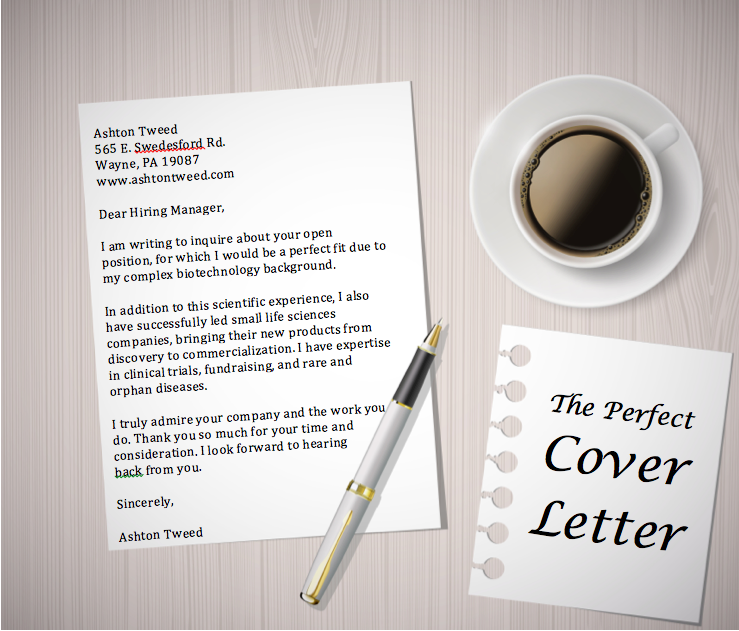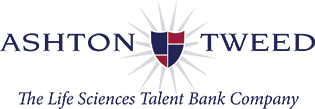7 Tips on Crafting the Perfect Cover Letter


 By Lea Wolfinger, Vice President, Ashton Tweed
By Lea Wolfinger, Vice President, Ashton Tweed
While finding and applying for jobs has become easier with the internet, the fundamentals of the process are the same. Writing skills, especially in the age of emails, are still extremely important. Whether your cover letter is being uploaded to a website, emailed to a recruiter, or mailed the old-fashioned way, one should still master the art of writing a proper cover letter. As an executive recruiter in the life sciences, I have read and edited many cover letters throughout my career. Here are my tips on crafting the perfect cover letter.
Before we begin, let’s address some of the more basic cover letter guidelines:
- Put your contact information at the top, including your LinkedIn or website link if you have one.
- Keep the length down to a single page – no more, no less.
- Use a professional and easy-to-read font.
- Be sure to proofread and proofread again.
- If you don’t know the name of whom you are writing to, say “Dear Hiring Manager,” “Dear Recruiter,” or whatever title is applicable.
- In most cases, your letter should be sent as an attachment to your email.
Intro – Why are you writing to the audience? Tell the reader who you are and why you are writing to him or her. Are you inquiring about an open position? Are you interested in their company in general? This is also a good place to name connections if you have any in order to clarify how you know this person or company. The intro should be brief and to the point.
Peak their interest – Let the reader know why you are a good fit and why they should consider you. What accomplishments, experience, or background can you elaborate on to set yourself above the rest? This is where you should brag about your successes and strengths – no one else is going to do it for you! Use some stats if you can. If you’ve successfully developed multiple therapeutics from start to finish, tell the reader. You have his or her attention, so make the most of this chance to market yourself briefly and precisely.
Stay relevant – The details of your entire professional career are not necessary in your cover letter. Let your résumé, CV, or LinkedIn profile reveal professional experience or education from many years ago. If you are a scientist or engineer with a complex academic background, only mention what’s crucial in regard to their company or position. Additionally, there is no need to say why you left your last job or to discuss salary, relocation, etc. – save this for the interview or after you’ve received an offer.
Use keywords – If you have access to a job description, mention specific skills the company is looking for in your letter. Do they want someone with small company success? Are they looking for an individual with clinical trial experience? Name it if you’ve got it! If you don’t have a job description to refer to, check out the company’s mission statement or core values on their website. These will provide keywords that the company looks for in new hires.
Show your knowledge – Make it clear why you want to work for them by showing what you know about the company and/or opportunity. It proves your interest, flatters your audience, and makes them feel they have not received a pre-written or cookie-cutter cover letter. This is especially important when applying to a life sciences company that may have complex science or technology to understand. A candidate who is deeply familiar with the industry is always desirable!
Conclusion – This is the paragraph where you can thank the reader for their consideration and inform them of what extra materials are included with the letter. Tell the reader whether you will follow up with them or wait for their response. Don’t forget to follow up if you say you will! Finally, sign off with “Sincerely,” “All the Best,” “Warm regards,” etc. Choose something formal that reflects whichever sentiments you prefer. If submitting the letter electronically, consider uploading a hand-written signature rather than typing your name.
Be yourself – If you have a unique writing style or want to break away from the traditional cover letter, go for it! Just make sure the fundamental content mentioned above is included. If you want to start off with some impressive stats to catch the reader’s attention, try it out! These guidelines aren’t set in stone – just be sure to have a trusted peer read over your letter before sending it out.
Now that you have some insight on drafting a strong cover letter, don’t forget to tailor your cover letters to each company or position. This is a must! Recruiters and hiring managers can easily tell which cover letters are newly-written and tailored versus ones that are general and show little effort in their creation. If you are applying to many different companies in a given period, consider writing one general cover letter for your search and then editing the letter accordingly. The more you practice writing about yourself, the easier it will get!
Looking for a new career? Upload your résumé to our Life Sciences Executive Talent Bank.
Share your insights! Contact jamesrudman@ashtontweed.com to contribute your life sciences article as a guest writer.





